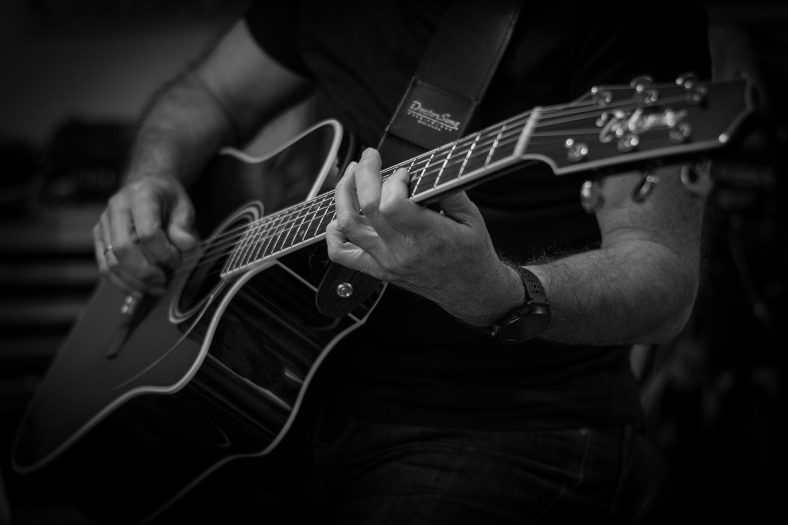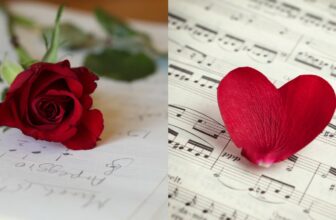What is a Middle 8?

A middle 8 is a section of a song that differs in melody and lyrics and helps the song develop naturally by providing contrast to what was previously playing in the song, usually set after the second chorus.
In this article, we’re going to explain this commonly misunderstood song section in more detail. The middle 8 can even feature a completely different atmosphere in terms of the arrangement, forming an interesting contrast with the rest of the song. Quite often, it involves a key change.
Whatever you choose to put in this section, there is only one important factor to keep in mind: a middle 8 exists to bring variety to a song. It is a sort of break before we go back to the main part of the tune, the chorus. It serves the need to make the song more dynamic, as it adds movement and tension, finalized to resolve on the hook.
Contents
Is a Middle 8 the same as a Bridge?
Even if the terms are often used interchangeably, the middle 8 and the bridge are different parts of a song.
The bridge usually connects a verse to the chorus, while the middle 8 doesn’t serve as a connection but, rather, as a turning point.
For example, Lenny Kravitz’s song I’ll Be Waiting features both a bridge between every verse and chorus and a middle 8 before the last chorus.
The first bridge starts at 0:40 and takes the listener to the exploding chorus at 0:53. The middle 8, on the other hand, starts at 2:32. It presents a different chord progression and also a change in the arrangement, as it features a whole orchestra, dragging on unto the last two choruses.
Lenny Kravitz used both the bridge and the middle 8 wisely in this hit song, but let see some other examples of great middle 8s in the history of pop music.
Songs with a great Middle 8
One of the best middle 8s of all time is probably represented by the Beatles’ song A Day in the Life. The middle 8 starts at 2:17 after an orchestral break that intensively builds up towards another calmer section, somewhat symbolizing the chaos of a dream minutes before waking up. On top of adding an interesting section to the song, the orchestral break and the middle 8 serve as a sonic representation of the story portrayed in the song.
For another great middle 8, check out David Bowie’s Changes. Starting at 2:26, right after the second chorus, this section adds a certain dreamy flavor to this gritty song. A new atmosphere that perfectly tends back to another chorus.
Bruce Springsteen’s Born To Run offers another fantastic example to understand what a good middle 8 is. Occurring at 2:12, after an exciting sax solo, it breaks up the rock’n’roll mood of the song to bring us into a sort of eerie fantasy. The melody changes to a calmer and almost whispered tale, to build up towards an instrumental break ending with one of The Boss’ legendary countdowns that brings us back to a verse.
The ethereal Running Up That Hill by Kate Bush presents another evocative middle 8 that effectively breaks up the song to offer a more enticing rhythm before returning to the initial synth riff and then another chorus.
Let’s end with another beautiful example of female songwriting, by adding Stevie Nicks’ Edge of Seventeen. In this epic song, the middle 8 appears a bit earlier than usual, at about 2:27. A change in the rhythmical patterns of the lyrics and the overall melody transport the listener to a more dramatic mood before getting back to the initial haunting guitar riff.
How do you write a Middle 8?
To write a great middle 8, we must focus on bringing movement and change to our song. A great way to do that in the songwriting stage is to bring a drastic change to the melody and deliver a completely different mood or atmosphere.
Try also to change the mode. For example, if your song is in a major mode, switch to a minor mode. Or change the key, moving one step up or down. Just make sure the melody will compel the listener to get back to the chorus, maybe through a classic open cadence (if the verse opens up on I, try to end the middle 8 with a V or IV).
As for the lyrics, they should introduce a new idea, a new act in the story portrayed by the song. Consider changing metrics too, using longer or shorter phrases.
Generally speaking, a middle 8 section is not always necessary. If misused it could actually feel like a useless addition. However, it may be necessary if a song is particularly simple or minimal in terms of melody and harmony. The middle 8, especially in these cases, can hugely help to add movement and structure.
Conclusion
The middle 8 is an extended song section that usually lasts between 8 and 13 bars. It can involve an instrumental solo or a lead vocal part with changed lyrics and mood.
A middle 8 serves the need to make a song more dynamic, as it adds movement and tension, which will be resolved on the hook. It brings variety to the song and should introduce a new idea or act in the story portrayed by the song.
If misused it could feel like a useless addition, but it may be necessary for a song that is particularly simple or minimal in terms of melody and harmony. The middle 8 here can add movement and structure.





